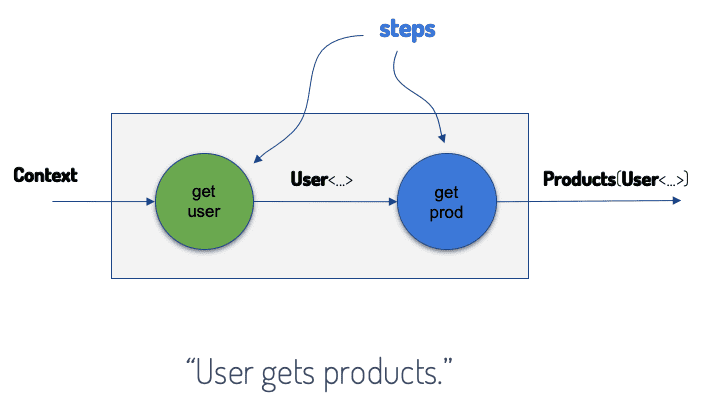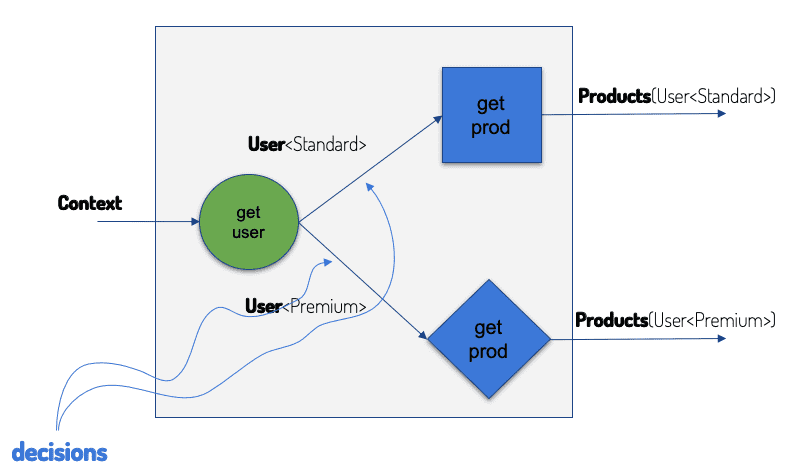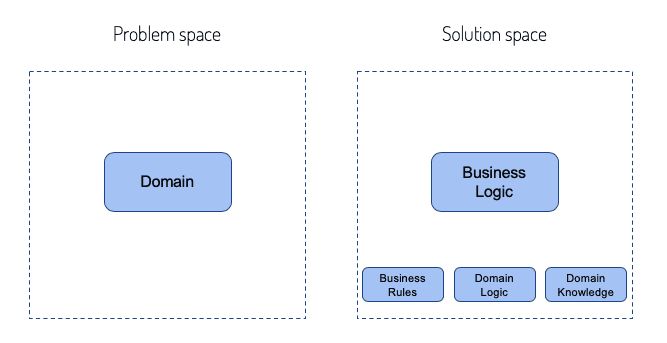In this post, we will tell you how do we understand business logic and how it is related to user stories and the rest of the Domain-Driven Design concepts. It starts the series discussing "Business Logic Evolution".
Wikipedia defines business logic as follows:
In computer software, business logic or domain logic is the part of the program that encodes the real-world business rules that determine how data can be created, stored, and changed.
But how is that definition connected with the code? Today, we will tell you what business logic means to us, software engineers, and transform user stories to domain objects and then model the solution.
Story
We begin with a brief story, the user story. Once upon a time...
a user gets products.
This sentence captures a requirement of a software feature from an end-user perspective. It describes what the user wants. The subject (“user”) is a model (class) that has no behaviour (methods) defined, and contains data (properties). In the Domain-Driven Design (DDD) it is called a domain object. Our story specifies two domain objects: a user and a product. The verb (“gets”) defines an action/state/relation between our domain objects. What's interesting is that this single word hides most of the complexity of to the solution we are building. One more fact, user stories focus on results, leaving out the technical details like “how” to get products.
Business logic
Business logic is a part of the solution (application) that executes user stories, using domain objects as its inputs and outputs. While domain objects define the “who” and the “what”, business logic addresses the "how". This simple diagram summarizes our understanding of business logic:
Looking at the diagram above, we quickly notice the similarity between business logic and a computer program - let’s call it a function for simplicity. Every function has an input and an output, which constitute a function's contract. And the contract for the function that represents our example user story would be:
- Domain objects:
User,Product - Input:
User - Output:
Products(User)
The output is a list of products that are in the User’s context.
Having said that, we can divide business logic of our example into two steps:
- the first step gets details about the user
- the second step uses user details and gets products
It is easy to see that the result of the previous step becomes the input of the next.
Decisions
Let's make our example user story more specific:
Standard user gets standard products. Premium user gets premium products.
Adjectives define domain object properties, the attributes. Now our functions look like this:
- Output 1:
Product<Standard>(User<Standard>) - Output 2:
Product<Premium>(User<Premium>)
Attributes define business decisions, which shape conditions for the next steps. Each step is influenced by decisions from previous steps.
So our “steps” diagram looks like:
Note: For simplicity we start the diagram with “Context”. That can be an HTTP request, but also any other trigger. We will not focus on details of it in this article.
The “get user” steps for both scenarios accept the same input (Context) but define two different outputs
(User<Standard> and User<Premium>). Those outputs are business decisions. Steps with the same input can be easily
merged, as shown on the diagram below:
As you can see, steps can have a single input and multiple outputs. The input specifies previous business decisions and the outputs new ones.
Big picture
The presented user stories were trivial. Very often, they are the result of breaking down more complex domain problems into small manageable items. So one story defines input for another, etc. Combining them together we get a graph of steps.
We can say business decisions produce paths to new steps encapsulating new business logic. Finally, we get an acyclic directed graph of steps (it's actually a tree), where leaves are the final outputs. Such representation can help to understand the complexity and the impact of the changing circumstances faster so it's desired when building larger systems. As an example of how the graph representation of business logic can be done in practice, you can take a look at our open source project called Knot.x (the actual implementation is done in the Knot.x Fragments module).
Summary
A user story is a bridge between problem and solution spaces. It focuses on a domain, specifying domain objects and relations between them. Business logic defines steps that fill the gap between domain objects. It is a part of the solution, managed by software engineers.
Continue reading to the second post in this series: What is the business logic evolution.
Hero image by Roman Mager, opens in a new window
This post was originally published on: https://knotx.io/blog/how-to-understand-business-logic/, opens in a new window





